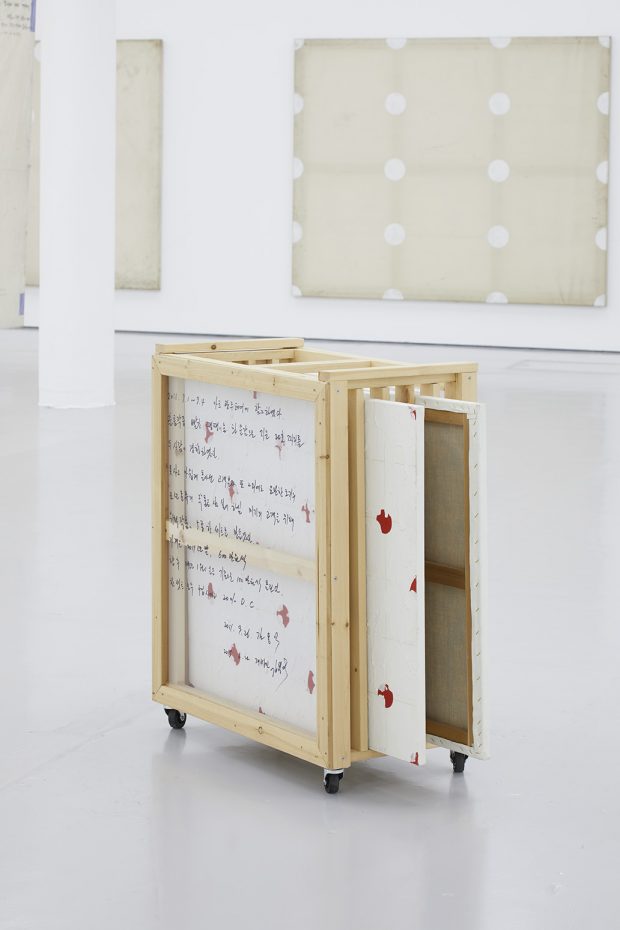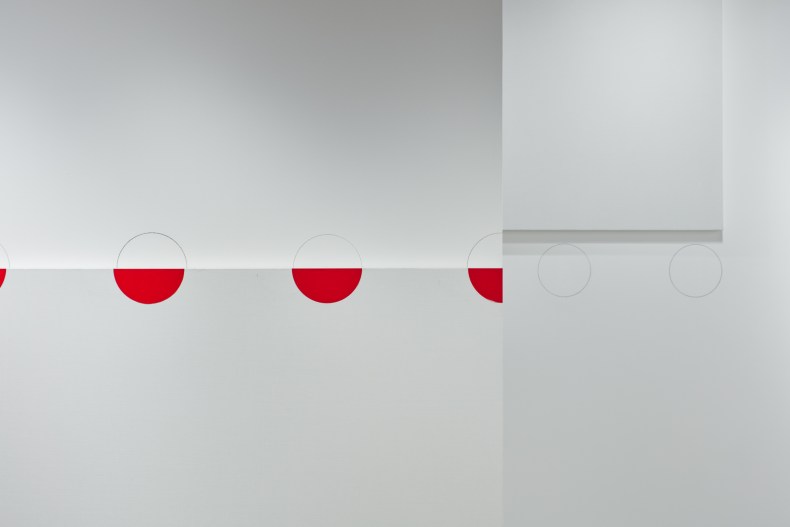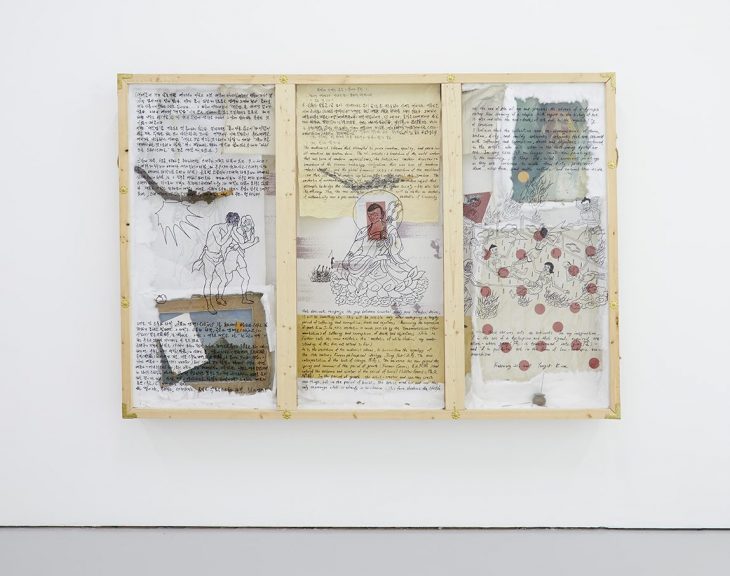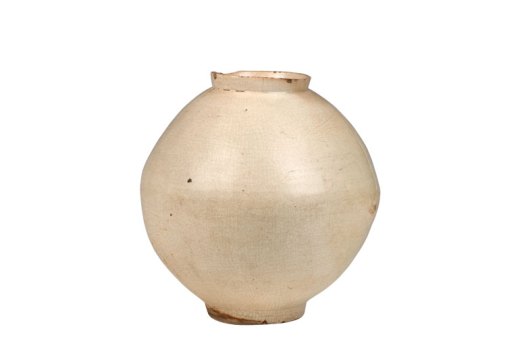In 1981 Kim Yong-Ik seemed to have a promising career in front of him. The young painter was an increasingly well-known name in the Korean art world; he had just completed his thesis on Marcel Duchamp, and was regarded as the star pupil of Park Seo-Bo, the undisputed master of the Dansaekhwa (literally ‘monochrome painting’) movement. To cap it all Kim had been invited to exhibit at the inaugural Young Artists Exhibition at the National Museum of Modern and Contemporary Art in Seoul.

Installation view of, in the foreground, Special Offer Set (2011–15); in the background, Untitled (1990), at Spike Island, 2017. Photo: Stuart Whipps/Spike Island; courtesy the artist and Kukje Gallery
However, Kim Yong-Ik’s political activism was beginning to take precedence over his paintings. At the Young Artists Exhibition Kim folded his series of Plane Objects paintings into boxes, which he exhibited in the gallery, unopened. It was a Duchampian gesture, but also a retort to the repressive political situation under the military dictatorship.
Kim’s gesture was considered beyond the pale by his elders and peers. His career stopped dead in its tracks. He has spent the years since scraping a living at a low-ranking art school – a period of hardship to which the show’s title alludes. ‘I Believe My Works Are Still Valid’ at Spike Island in Bristol is the first attempt in Europe to resurrect the artist’s career. This broad survey of the artist’s work since the 1970s is accompanied by an installation at the Korean Cultural Centre on the Strand in London. The title of the Bristol exhibition refers to Kim’s struggle to continue making art in the face of establishment hostility and indifference.

Installation View of ‘Kim Yong-Ik’ at the Korean Cultural Centre UK. Courtesy the artist and the Korean Cultural Centre UK
Spike Island, an 80,000 square foot former tea-packing factory, is an elegant and appropriate venue for Kim Yong-Ik’s work, which is by turns playful, eccentric, and reflective. His polka dot works, in particular, are captivating, sharing the meditative quality of the best Dansaekhwa works, but (in common with much of his work) adding a much needed sense of mischief.
An added point of interest is that Kim has often gone back over earlier work, repurposing it, annotating it, even scrawling translations on the walls of the gallery. The most recent work on show, his ‘coffin’ series, comprises older pieces swaddled in silk funeral cloths and entombed in pine caskets ready for burial. It gives the impression of an artist still ready – despite the recent upswing of interest – to re-inter his career at short notice. He should hold off a little longer.
‘Kim Yong-Ik’ is at the Korean Cultural Centre UK, London, until 4 November; ‘I Believe My Works Are Still Valid’ is at Spike Island, Bristol, until 17 December.
Unlimited access from just $16 every 3 months
Subscribe to get unlimited and exclusive access to the top art stories, interviews and exhibition reviews.














![Masterpiece [Re]discovery 2022. Photo: Ben Fisher Photography, courtesy of Masterpiece London](http://www.apollo-magazine.com/wp-content/uploads/2022/07/MPL2022_4263.jpg)
It’s time for the government of London to return to its rightful home